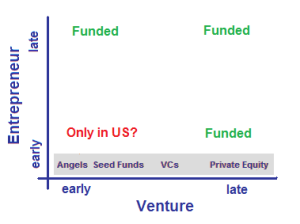Facebook is the largest personal service known to mankind. I don’t think any single service has so many engaged users. It is a great service too, it allowed people to stay connected with 100s of people instead of the 50 or so that we were used to. In a way, everyone has a shot at becoming a celebrity (defined as a person having a light touch relationship with a large number of people). It also helped augment physical relationship with photos of friends and families adding richness to the connect we wish to share.
The universal adoption of facebook also shows that it appeals to really basic human instincts. It probably appears that the basic instincts are the need to connect socially but when we dig deeper into the kind of interactions, the basic instincts are revealed to be: Vanity and Voyeurism. This kind of makes sense, the largest other services on the internet are also sin industries. Facebook’s appeal is that it has a convenient facade.
The very roots of facebook included a restrictive membership starting with ivy league colleges or a work email-id. It became a vanity badge early on to say whether you were in the club or not. The facebook team understood the potential for vanity and voyeurism and has always interpreted privacy of content such that it can leak to a circle of people who would be interested in gawking at it. Except for a small band of privacy conscious, for the larger user base once the fact that content will get leaked and peeped into is normal, the content itself becomes customized for peeping. Voyeurism driving Vanity in short.
This explains why only happy vacation photos are shared, all statuses are about having fun and people in general feel that everyone around them is having a time of their life except themselves. Not getting enough likes on your photo can lead to depressive thoughts or a habit of liking them yourself.
Facebook’s strategy of encouraging vanity and voyeurism is great for service adoption but that may also explain its failure to monetize the wealth of user information it has so far. The user information is simply what people want to show they are rather than what they are. Facebook may solve this over time with deeper analysis of user interactions then it does today.
So given Facebook’s active enticement of users towards these vices, some users I know are quitting or reducing usage. But the user also has an option to treat it like the the Tapovan of the ancient past and be a Social Yogi taking advantage of this (no longer) new medium while avoiding the treacherous pitfalls which Mara has in store for you. Or as Calvin’s Dad would say, ‘It can help you build character’.



 The second key trend is the rise in open source adoption. Turning open source has become an accepted strategy for small product companies who can’t fight the
The second key trend is the rise in open source adoption. Turning open source has become an accepted strategy for small product companies who can’t fight the 








